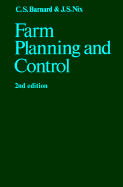Book contents
- Frontmatter
- Contents
- Notice to readers
- Preface to the first edition
- Preface to the second edition
- Selected metric conversion factors
- Part I The organisation of resources
- Part II The organisation of enterprises
- 6 An introduction to enterprise organisation
- 7 Livestock yield and fixed costs
- 8 Yield, variable costs and optimal feed conversion
- 9 The selection of feedstuffs
- 10 The influence of season on livestock production
- 11 The provision of replacements
- 12 Crops and cropping
- Part III The combination of enterprises
- Part IV The control of resources and enterprises
- Selected further reading
- Index
11 - The provision of replacements
Published online by Cambridge University Press: 01 June 2011
- Frontmatter
- Contents
- Notice to readers
- Preface to the first edition
- Preface to the second edition
- Selected metric conversion factors
- Part I The organisation of resources
- Part II The organisation of enterprises
- 6 An introduction to enterprise organisation
- 7 Livestock yield and fixed costs
- 8 Yield, variable costs and optimal feed conversion
- 9 The selection of feedstuffs
- 10 The influence of season on livestock production
- 11 The provision of replacements
- 12 Crops and cropping
- Part III The combination of enterprises
- Part IV The control of resources and enterprises
- Selected further reading
- Index
Summary
Once any livestock process has been initiated, replacement stock must be provided if it is to continue. With most permanent livestock, only a proportion of the animals are normally replaced each year, either because they die or because they fall below an acceptable standard due to disease, other disorders, old age or poor genetic capacity. With temporary livestock, however, the provision of replacements is a more fundamental part of the process, for when one batch has been sold they must all be replaced, if production is to continue on the same scale.
It was seen earlier (Chapter 6) that replacement stock are end-products in their own right and yet are also inputs to further production. This is most obvious when different stages of production are carried out on separate farms. For example, one farmer may produce weaned piglets and sell them to another, who fattens them for sale as baconers. Or again, dairy heifers may be reared by one farmer who undertakes no milk production and sold to another who keeps a milking herd but rears no replacements.
In consequence, economic decisions relating to replacements fall into two categories. The first concerns the replacement unit as an independent activity with its own output and involves problems of organisation similar to those already considered; for example, what feeds to select and what amounts to feed.
- Type
- Chapter
- Information
- Farm Planning and Control , pp. 243 - 259Publisher: Cambridge University PressPrint publication year: 1980



